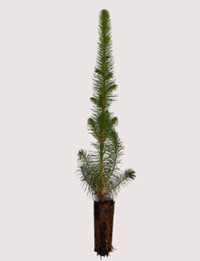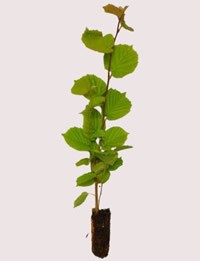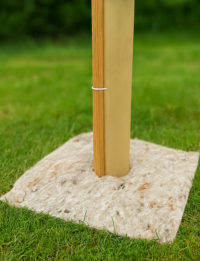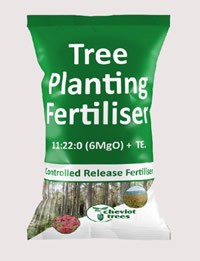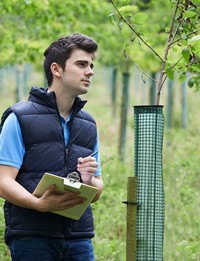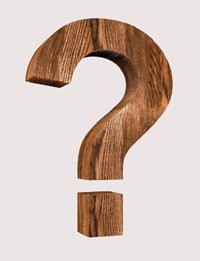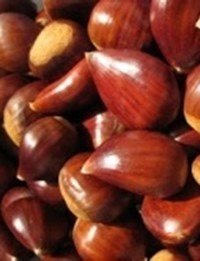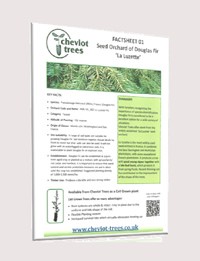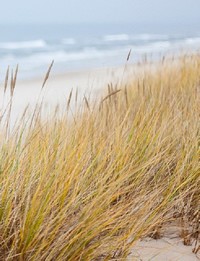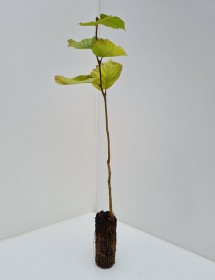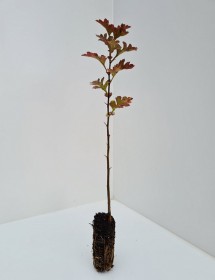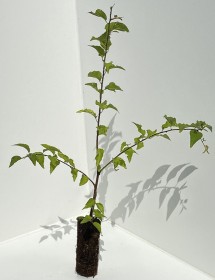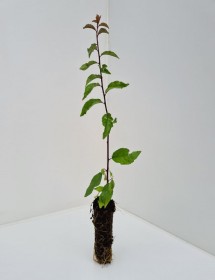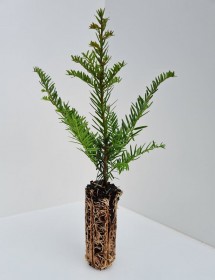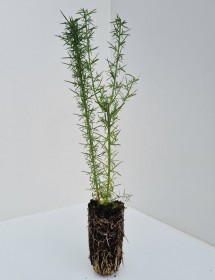
Hedging
At Cheviot Trees we grow large quantities of hedging plants at our nursery in the Scottish Borders to supply farm, estate and landscape hedge planting.
We grow species to suit all planting objectives including stewardship and farm hedging, privacy screening and also evergreen hedging.
-
Acer campestre - Field Maple
£1.52from £0.67Acer campestre - Field maple is a versatile and resilient fast growing small to medium sized tree that is also suitable for hedgerow planting.
It is a colourful species; the attractive five lobed leaves are flushed red in Spring, turning green and then yellow / gold in the Autumn. Deciduous. Native to the UK
Our cell grown Field Maple plants are often used for hedge planting either on their own or mixed with other species such as Hawthorn, Blackthorn, Hazel etc. Usually at a planting density of 6 plants per metre.
-
Buxus sempervirens - Box
£2.13from £1.28The majority of the Buxus sempervirens - Box plants that we supply are used for hedging as it makes a fabulous formal hedge, but our clients also use it for planting as an understorey species in mixed woodlands or for game cover.
Evergreen with small, shiny dark green leaves. It is a very long lived species and can live for several hundred years.
-
Carpinus betulus - Hornbeam
£1.82from £0.81Carpinus betulus - Hornbeam is an excellent versatile species which can either be used for forestry purposes or for hedging. If grown for hedging the leaves will stay on throughout most of the winter.
-
Cornus alba - Red Dogwood
£1.52from £0.67Cornus alba - Red Dogwood is a shrub that grows well in wet soils and is normally found along woodland edges and in hedgerows. It is a good choice for game cover.
Red Dogwood is grown mainly for its bright red stems. Deciduous with fresh green leaves that have distinctive curved veins. The leaves turn a rich crimson colour in the Autumn.
Creamy white flowers are produced in clusters which once pollinated by insects develop into small black berries which are eaten by birds and mammals.
Our cell grown Cornus alba - Red Dogwood plants are often used for hedge planting either on their own or mixed with other species such as Hawthorn, Blackthorn, Dog rose etc. at a planting density of 6 plants per metre.
-
Cornus sanguinea - Common Dogwood
£1.52from £0.67Cornus sanguinea - Common Dogwood is a native shrub that grows well is wet soils and is normally found along woodland edges and in hedgerows. It is a good choice for game cover.
Deciduous with fresh green leaves that have distinctive curved veins. The leaves turn a rich crimson colour in the Autumn.
Creamy white flowers are produced in clusters which once pollinated by insects develop into small black berries which are eaten by birds and mammals.
Our cell grown Dogwood plants are often used for hedge planting either on their own or mixed with other species such as Hawthorn, Blackthorn, Dog rose etc at a planting density of 6 plants per metre.
-
Corylus avellana - Hazel
£1.82from £0.81Corylus avellana - Hazel is a small shrubby tree which is often found in mixed native woodlands and hedgerows.
It is well known for its long yellow catkins which appear in the Spring and then produces hazelnuts in the summer. Native to the UK.
Our cell grown Hazel plants are often used for hedge planting either on their own or mixed with other species such as Hawthorn, Blackthorn, Dog Rose etc. at a planting density of 6 plants per metre.
-
Cotoneaster lacteus - Milkflower Cotoneaster
£1.93from £0.93Cotoneaster lacteus - Milkflower Cotoneaster is a dense evergreen shrub that can be used for an informal hedge or screen.
Its main attraction is the clusters of creamy white flowers which persist all summer and then masses of red berries are produced in the autumn and stay on the plant until the winter.
This species has a wide arching habit with large leathery leaves with deep veins which have a furry underside.
-
Cuppressocyparis leylandii - Leylandii
£3.64from £1.73Leylandii is a large evergreen conifer that is most commonly utilised for hedging or screening purposes.
Tough, Fast growing and tolerant of most conditions.
The foliage is dense, dark green in colour and flat in shape. We also produce Golden Leylandii.
If you are planting for hedging/screening you may also wish to consider Western Red Cedar. This species is equally as fast growing but has a tighter shape and a richer shade of green.
-
Cupressocyparis leylandii Castlewellan Gold -...
£3.64from £1.73Cupressocypairs leylandii Castlewellan Gold - Golden leylandii is a large evergreen conifer that is most commonly utilised for hedging or screening purposes.
Tough, Fast growing and tolerant of most conditions.
The new growth is strikingly golden yellow in colour. We also produce Green Leylandii.
If you are planting for hedging/screening you may also wish to consider Western Red Cedar. This species is equally as fast growing but has a tighter shape and a richer shade of green.
-
Crataegus monogyna - Hawthorn
£1.60from £0.70Crataegus monogyna - Hawthorn is the backbone of most British hedgerows and is one of the first species to produce new leaves in the Spring. If left untrimmed it will grow into a small tree with a very dense crown.
A very showy native species with fragrant, creamy white flowers in the Spring followed by green haws (berries) turning red in autumn.
Spiny, dense deciduous foliage which provides an excellent habitat for birds and insects.
Our cell grown Hawthorn plants are often used for hedge planting either on their own or mixed with other species such as Crab Apple, Blackthorn, Dog Rose etc. at a planting density of 6 plants per metre.
-
Euonymus europeaus - Spindle
£1.84from £0.89Spindle hedging plants provide a wonderful array of autumn colour. The four-lobed capsules burst into life with a vibrant shade of pink, opening to reveal orange fruits in the autumn. Euonymus europaeus hedging plants have dark green foliage that transforms into rich shades of red and yellow in autumn, adding another layer of colour to your garden. Spindle produces a dense hard wood that was traditionally used for making spindles and small implements.
A fast-growing species, Spindle is ideal for giving an array of colour to a hedge and is an excellent attractor of wildlife.
-
Fagus sylvatica - Green Beech
£1.82from £0.81Fagus sylvatica - Green Beech is one of the most widely planted broadleaved trees in Europe. A long lived species that is commonly used in the UK as a component in a mixed woodland, for hedging or for parkland planting due its very broad crown.
Smooth, silver grey bark. Dark green leaves turning yellow then copperin autumn. The leaves are retained on the plant during the winter if the plant is maintained as a hedge. If you are comparing Beech or Hornbeam for hedging and you have damp soil and or you are in a cold exposed area then we would suggest using Hornbeam.
-
Juniperus communis - Common Juniper
£3.34from £1.47Juniperus communis - Juniper is a small evergreen conifer that is native to the UK.
Small green needles with a prickly point. Juniper is dioecious so the male and female flowers grown on separate plants. Once pollinated by wind the female flowers develop into fleshy purple berries.
The berries are popular for flavouring gin but they are equally favoured birds who eat the berries. Juniper is also an important habitat for small mammals and nesting birds due the dense cover that it provides.
-
Ligustrum ovalifolium - Oval Leaved Privet
£1.93from £0.93Ligustrum ovalifolium – Oval leaf privet is a fast growing semi evergreen hedging species with glossy dark green leaves and creamy white flowers during the summer months.
A robust species which tolerates regular pruning. Also suitable for coastal locations although you may notice some defoliation during winter.
You may also wish to consider Wild Privet which has narrower leaves and a looser growing habit.
Creamy white flowers during the summer months.
-
Ligustrum vulgare - Wild Privet
£1.98from £1.22Ligustrum vulgare - Wild Privet is a bushy, native shrub that we often supply as part of a native hedge mixture but it is also useful on the edge of woodlands or as game cover due to its good tolerance of shade.
It is semi evergreen so provides useful cover and shelter for wildlife in the winter thanks to its relatively untidy and gnarly habit.
Semi evergreen with thin, green pointed leaves. Small white flowers are produced in the Summer with dark purple berries that follow in the Autumn.
You may also wish to consider Oval Leaf Privet which has larger oval leaves with better retention properties.
-
Lonicera nitida - Boxleaf Honeysuckle
£3.34from £1.47Lonicera nitida, commonly known as the Boxleaf Honeysuckle due to its small box type leaf that is pale green in colour.
It has as looser habit when compared against box so it should not be first choice for formal hedging but it is useful for planting on woodland edges as it offers good winter shelter and interest.
Fast growing and evergreen with small white flowers appearing in Spring.
-
Prunus cerasifera - Cherry Plum
£1.70from £0.74Prunus cerasifera - Cherry Plum is a fast growing, dense hedging plant which is an excellent choice for providing shelter.
Masses of pure white flowers smother the branches in early March before the leaves appear and these are followed in autumn by tasty red or yellow, spherical cherry-plums. You can make jam, wines or even liqueurs from the fruits and it forms a very dense hedge of thorny twigs making it an extremely effective barrier.
The Cherry Plum is an excellent attractant and nectar source for bees and other beneficial insects.
Ultimate height 25 feet (7.5 metres). Can be trimmed to any height above 4 feet (120 cm). Average annual growth rate 1 - 2 feet (45 - 60 cm).
-
Prunus laurocerasus - Cherry Laurel
£1.92from £0.93Prunus laurocerasus - Cherry Laurel is one of the most popular hedging plants in our range.
Fast growing, tolerant and easy to grow it is a superb choice if you need a solid screen. We also grow Portuguese Laurel which has a smaller more pointed leaf.
Cherry laurel does produce flowers and berries although these are quite insignificant as the main attraction is the large, dark green glossy leaves.
Its good tolerance of shade also makes it suitable for planting in open areas of woodland or on edges if shelter or cover is required.
3 plants per linear metre in a single row is normally sufficient to create a dense screen in time.
-
Prunus lusitanica - Portuguese Laurel
£2.13from £1.03Prunus lusitanica - Portuguese Laurel has all the desirable properties of Cherry Laurel but has a smaller, pointed leaf.
Fast growing, tolerant and easy to grow it is a superb choice if you need a solid screen. It responds well to clipping and if desired, it is possible to achieve a very tight, formal hedge, more so than the Cherry Laurel - Prunus laurocerasus.
It does produce flowers and berries although these are quite insignificant as the main attraction is the large, dark green glossy leaves.
Its good tolerance of shade also makes it suitable for planting in open areas of woodland or on edges if shelter or cover is required.
3 plants per linear metre in a single row is normally sufficient to create a dense screen in time.
-
Prunus spinosa - Blackthorn
£1.52from £0.67Prunus spinosa - Blackthorn is widely used throughout the UK for good reasons; robust, useful and tolerant. Commonly used to form impenetrable hedging or as a stand alone large shrub/thicket.
The snow white flowers on Blackthorn mark the start of early Spring and appear before the leaves which are green and narrow in shape.
Once pollinated by insects the flowers develop into small dark fruits.
Blackthorn has long spikes and is densely branched - an ideal location for bird nesting.
Our cell grown Blackthorn plants are often used for hedge planting either on their own or mixed with other species such as Crab Apple, Hawthorn, Dog rose etc. at a planting density of 6 plants per metre.
-
Rosa canina - Dog Rose (Pink)
£1.52from £0.67Rosa canina - Dog Rose is the only native Rose that we produce, and it is the most widely used as it is easy to grow and is adaptable to most locations.
Ideal for planting as part of a native mixture or on its own.
Deciduous with small green toothed leaves. Large and sweetly scented white or pink flowers appear in summer with red oval berry like hips forming in small clusters.
Dog Rose is a good choice for wildlife, offering protective shelter and habitat plus a good source of nectar for insects. Bird species such as blackbirds, redwings and waxwings eat the hips.
-
Rosa rugosa - Ramanas Rose (Pink)
£1.93from £0.93Rosa rugosa - Ramanas Rose is a large robust shrub that produces large, beautiful and very fragrant bowl shaped flower that are fuchsia pink in colour. It flowers earlier than our native Dog Rose and often repeat flowers during the Spring and Summer. Very large red hips follow the flowers.
The stems are covered in small spines which makes it ideal for an impenetrable and dense hedge or barrier.
A good all rounder. Attractive, good disease resistance, fast growing and very tolerant of exposure and coastal locations.
We also produce Rosa rugosa alba which has silky white flowers.
-
Rosa rugosa Alba - Ramanas Rose (White)
£1.93from £0.93Rosa rugosa Alba - Ramanas Rose is a large robust shrub that produces large, beautiful and very fragrant bowl shaped flower that are silky white. It flowers earlier than our native Dog Rose and often repeat flowers during the Spring and Summer. Very large, red hips follow the flowers.
The stems are covered in small spines which makes it ideal for an impenetrable and dense hedge or barrier.
A good all rounder. Attractive, good disease resistance, fast growing and very tolerant of exposure and coastal locations.
We also produce Rosa rugosa which has fuchsia pink flowers.
-
Taxus baccata - Yew
£1.93from £1.03Native to the UK, Taxus baccata - Yew is a dense evergreen conifer with small green needles.
Used for hundreds of years in the UK to create hedging, the bright green spring growth matures to a dark green for a classical look. It can be easily shaped and makes an excellent screen for privacy.
It is often perceived to be a slow growing species but it is actually quite fast growing in its juvenile stage.
The normal spacing for hedge planting is around 3 plants per linear metre.
-
Thuja plicata - Western Red Cedar
£1.52from £0.67Thuja plicata - Western Red Cedar is a very useful species and a popular choice with our customers. It is a tall, multi-functional evergreen conifer.
It has flat sprays of sweetly scented green foliage with brown, oval shaped cones.
In the UK Western Red Cedar is planted for timber production and also for hedging.
The highly durable redwood timber is well regarded as it contains a natural preservative with helps to resist fungal attack.
Western Red Cedar is an excellent hedging species as it is evergreen, dense and is easier to manage than other conifer species such as leyandii. If planting for hedging the normal planting density is 3 plants per metre.
-
Ulex europeaus - Gorse
£1.98from £0.88Ulex europeaus - Gorse is tough, adaptable and very pretty when planted en mass The ‘leaves’ are long sharp spikes that are hostile in appearance.
The vibrant, coconut scented yellow flowers symbolise that spring has arrived and typically appear in April/May.
Many species of birds take full advantage of the dense shelter that gorse provides and the gorse flowers are a great source of nectar for bees and butterflies.


